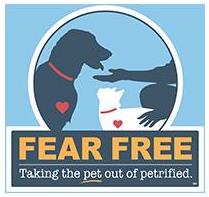Animal behavior issues are the number one reason why animals are usually unjustly euthanized in this country. All animals are not the same, they are unique and must be treated as individuals with patience. I am not a behaviorist, but have learned that most people, including myself, for years have been doing things that can be confusing for our pets without even knowing it. Some animals like being hugged and some don’t. In time you will learn what is appropriate for your new friend.
The first two weeks a new animal (puppy, kitten, adult cat or adult dog) comes into your home is what we call a “honeymoon period”. Being in a new home, no matter how nice, is still strange to them and they may be on their best behavior until they feel secure that they are not leaving. Allow your new pet time to settle in but not to take over. Assume that all dogs want to have a job and things to do. If you do not spend quality time with your pet, it will get bored and create work for itself, often times being destructive. Dogs are pack animals and need to know their role. They need rules, boundaries, and limitations without physical trauma. years ago people were told to show their animal who was boss by dominating them. Trying to physically dominate anyone, person or animal, just leads to fear and aggression and misunderstanding. Try and match your lifestyle and needs with the type of dog you want. For example, don’t get a young herding dog if you want to spend most of your time indoors.
These are the rules to follow for any type of dog you purchase or adopt, regardless of breed, history, or age.
-Rule #1 – Teach and practice obedience with your dog. Come, sit, stay, heel, and down.
– Rule #2 – Do all these things in all areas of your house as well as outside.
– Rule #3 – Even if you have 4 acres of fenced in yard your dog needs to be walked on a leash. It is no enough stimulation to just be in the yard. Walks should be at least 30 -45 minutes 2 times a day. A Halti or Gentle Leader with a safety chain is recommended. Always use a short 4 foot lead, no retractable leashes. Make sure that you are walking the dog, never let him walk you. It’s hard to teach dogs rules if they are full of energy. Walks provide exercise and leadership. Older dogs may develop uncharacteristic behaviors due to medical conditions like arthritis or cancer that might not be obvious to you. Arthritis medications and knowing what hurts your dog or what helps may make all the difference in the world. Consult your vet for help.
Remember time, patience, and practice makes perfect. Change in older dogs is harder. They may be less flexible, but it can always be done, it just takes longer. Some common problems are usually easy to solve if trained early and consistently. If the dog doesn’t want to move off the couch or growls when on your lap, don’t allow him there for a while. You want the dog to know he is at a lower level then you – he is not the top dog. If he’s guarding bones or toys either give him smaller rawhide strips he will eat in 5 minutes and leave him alone, or remove anything he will guard and avoid situations where he will want to guard his things, and increase training. Keep a leash on the dogs indoors until the training kicks in. Train the dog to leave it or drop it. The examples go on and on.
Read as much as you can, watch the “Dog Whisperer” on Animal Planet, and let’s keep trying to understand where our animals are coming from. If you can’t do anything else, wake up 30 minutes earlier every day and take your dog for a morning walk or run. You will feel healthier, happier, and your dog and family will love you more for it.








